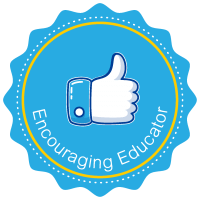As an educator with 14 years of experience teaching primary students across three renowned schools in Lucknow, I’ve had the privilege of learning from both my experiences and my colleagues. Currently serving as the Academic Coordinator for the Primary Level at GD Goenka Public School, Lucknow, I’ve come to appreciate the value of practical strategies that can be easily implemented yet have a significant impact on both students and fellow educators. Here, I’d like to share some tips, classroom strategies, and personal experiences that have shaped my teaching approach.
1. Create a Routine, But Stay Flexible
Children thrive on routine, but it’s important to balance consistency and flexibility. Early in my career, I had a class that struggled with transitions between activities. I implemented a clear, consistent routine with visual schedules, and within weeks, the class was more settled and focused. However, I also learned the importance of flexibility when an unexpected event, like a power outage, throws off our day. Instead of sticking rigidly to the plan, I adapted by turning the situation into an impromptu storytelling session, which kept the students engaged and made the day memorable. This experience taught me that while routines are essential, being adaptable is equally important.
2. Encourage Student Participation
Active participation is key to effective learning. I recall a student named Aarav, who was very bright but often hesitated to share his thoughts during discussions. To help him and others like him, I introduced the “Think-Pair-Share” technique. Aarav’s confidence grew as he first shared ideas with a partner before speaking to the class. One day, he proudly presented a complex idea during a science lesson, and the glow on his face was unforgettable. This simple strategy not only boosted his confidence but also created a more inclusive classroom environment where every student felt their voice was valued.
3. Incorporate Visual Aids and Hands-On Learning
Young students often grasp concepts better when they can see and manipulate materials. In one of my classes, I had a group of students who struggled with understanding fractions. I introduced fraction tiles and visual aids, which transformed their learning experience. Suddenly, abstract concepts became tangible, and I could see the “aha” moments light up their faces. This experience reinforced my belief in the power of visual and hands-on learning, which I now regularly incorporate into my lessons to cater to different learning styles.
4. Foster a Growth Mindset
One of the most valuable lessons we can impart to our students is the belief that abilities can be developed through dedication and hard work. I once worked with a student named Riya, who was easily discouraged by mistakes. I made it a point to praise her efforts and encouraged her to view mistakes as learning opportunities. Over time, I saw a significant shift in her attitude. She became more resilient and willing to tackle challenging tasks without fear of failure. This experience highlighted the importance of fostering a growth mindset, not just in Riya but across all my students.
5. Collaborate and Share Resources with Colleagues
As educators, we have much to learn from one another. Early in my tenure as an Academic Coordinator, I realized the immense value of collaboration. I initiated weekly meetings where teachers could share their successes and challenges. One of my colleagues introduced a peer-assessment strategy that I adopted in my own classroom, leading to increased student engagement and accountability. These collaborative sessions have not only enriched my teaching but also strengthened the bond among our teaching staff, creating a supportive community focused on student success.
6. Prioritize Student Well-Being
A child’s emotional and mental well-being is just as important as their academic success. I remember a student, Neha, who was bright but often distracted and withdrawn. After speaking with her privately, I learned she was going through a tough time at home. By offering her extra support and a listening ear, I noticed a significant improvement in her focus and participation. Simple acts like greeting students warmly each day and being approachable can make a huge difference in their overall well-being. This experience reaffirmed my belief that when students feel safe and supported, they’re more likely to engage fully in their learning.
7. Effective Classroom Strategies
In addition to these broader tips, there are specific classroom strategies that have proven to be particularly effective. One such strategy is the use of “Exit Tickets.” At the end of each lesson, I ask students to write down one thing they learned and one question they still have. This not only helps reinforce the day’s learning but also provides valuable feedback that can guide future lessons. I remember using this strategy after a particularly complex science lesson, and the responses helped me identify areas where many students needed further clarification, allowing me to address those gaps in the following class.


